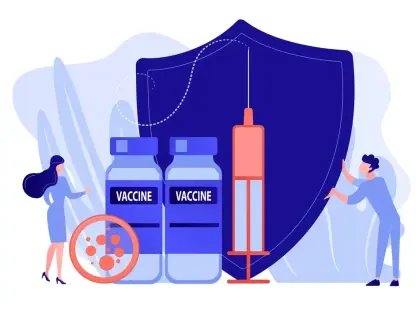The integration of artificial intelligence into public safety services presents both an exciting opportunity and a formidable challenge. This is exemplified by the California Department of Forestry and Fire Protection’s (Cal Fire) AI chatbot introduction. As part of Governor Gavin Newsom’s broader directive to harness the efficiency of AI in government functions, Cal Fire’s chatbot aims to provide Californians with crucial information on fire prevention and real-time emergency updates. However, the deployment reveals inherent challenges specific to AI’s role in critical public safety operations. The endeavor spotlights essential issues in technological innovation within public service sectors, particularly concerning the need for accuracy in disseminating urgent information.
Exploring the Potentials and Limitations of AI in Public Safety
The Ambitions Behind Cal Fire’s AI Chatbot
The intention behind implementing Cal Fire’s AI chatbot is to arm residents with vital data regarding wildfires, emergency preparedness, and safety protocols. Ideally, it would enable the public to access up-to-date information efficiently, thereby fostering a better-informed community. The chatbot’s design includes a range of functionalities, such as describing wildfire containment status, listing evacuation supplies, and issuing orders during emergencies. Yet, practical challenges have surfaced in ensuring the tool performs up to expectations, especially in terms of accuracy and consistency—critical for emergency response effectiveness.
Despite being a part of a larger trend of AI integration across California’s government departments, the Cal Fire chatbot’s performance issues underscore the necessity of intervallic testing and improvements. Tools responsible for real-time updates in emergencies must satisfy stringent accuracy standards. This need highlights a broader concern about adopting AI technologies: their readiness to operate seamlessly in high-stake environments like public safety. AI’s potential is vast, but its success hinges significantly on mitigating risks inherent in fast-paced, high-pressure settings.
Challenges in AI Chatbot Deployment
In deploying AI, issues such as inaccurate data delivery and inconsistent responses have emerged as significant barriers to effective public safety application. For Cal Fire’s chatbot to achieve its intended purpose, it must deliver precise, uniform data across all scenarios, addressing fundamental emergency management aspects. The difficulties encountered include infrequent updates on fire containment and mismatched responses regarding the readiness information, all indicating areas requiring rigorous enhancement. Such inconsistencies can jeopardize public trust and render AI tools ineffective in critical situations.
The discrepancies in chatbot performance are not isolated to Cal Fire; they resonate across various sectors where AI is being integrated without sufficient preparatory measures. Addressing these challenges involves not just technical improvements but also comprehensive testing protocols and performance benchmarks before implementation. Experts recommend involving the public in testing phases to ensure the technology meets practical needs and builds confidence in AI capabilities. Such measures are vital to fostering trust and ensuring AI systems effectively assist in public safety roles.
Bridging the Gap Between AI Innovation and Public Safety Requirements
Necessity for Rigorous Evaluation Protocols
The myriad challenges facing AI deployment in public safety underscore the importance of setting clear evaluation and performance standards. Establishing rigorous protocols ensures technologies operate effectively under varying conditions and meet public expectations. Daniel Ho, a Stanford University expert on governmental AI usage, emphasizes that robust evaluation should be a core component of AI adoption strategies. This involves creating explicit benchmarks and conducting comprehensive assessments before vendor selection and rollout, especially in sectors like emergency response where stakes are high.
Implementing these evaluation measures requires concerted effort from government agencies and private vendors. By focusing on user-centric development processes and enduring reliability tests, agencies can better align AI functionalities with community needs. Furthermore, incorporating citizen input can guide ongoing improvements and ensure AI technologies are equipped to serve their intended purposes. Taking such steps represents an essential component of balancing technological advancement with the practical demands of public safety and emergency management.
Continuous Improvement and Adaptation
Cal Fire’s chatbot demonstrates a commitment to evolving and refining AI systems even after initial deployment. This iterative process involves analyzing user interactions to identify areas needing improvement, ensuring the chatbot can respond accurately to diverse inquiries. Addressing these concerns equips the tool to more effectively serve its role within the community, showcasing an adaptive approach to technology integration amidst complexities.
The emphasis on continued refinement signifies a progressive understanding of AI’s place in public service. While setbacks are inevitable, adapting through structured feedback and iterative development can transform challenges into opportunities for capitalizing on AI’s potential. As governmental agencies expand AI usage, embedding adaptability into their technology frameworks creates space for ongoing enhancements aligned with dynamic public needs and emerging safety considerations. Such strategies are invaluable for leveraging AI innovations while upholding the critical safety responsibilities entrusted to public institutions.
The Road Ahead for AI in Public Services
Harmonizing Technology with Human-Centric Roles
Integrating AI into public services such as emergency management requires a careful balance between innovative technology and the traditionally human-centric nature of these roles. AI has the potential to augment human efforts, offering enhanced data analytics and streamlined information delivery. However, this integration must navigate the unique challenges posed by human and machine collaboration, ensuring technology supports rather than detracts from critical processes. As seen in Cal Fire’s initiative, harmonizing the two can maximize AI’s benefits and educate communities on safely adopting technological aids.
To facilitate successful human-AI collaboration, ongoing educational efforts must accompany technological advancements. Ensuring that the public understands how AI will function within existing systems fosters transparency and trust. Similarly, training public safety personnel to effectively leverage AI tools can enhance response capabilities. Pursuing these supportive measures represents a proactive approach to the technological transformation of public services, prioritizing both innovation and human values in equal measure.
Strategic Alignment of AI Capabilities with Service Objectives
The integration of artificial intelligence into public safety services offers both significant potential and notable challenges, as demonstrated by the California Department of Forestry and Fire Protection’s (Cal Fire) recent introduction of an AI chatbot. This initiative is part of Governor Gavin Newsom’s wider strategy to employ AI to enhance the efficiency of government operations. Cal Fire’s chatbot is designed to arm Californians with essential fire prevention information and to provide real-time updates during emergencies. However, the implementation of such technology highlights the complex challenges involved in integrating AI into critical public safety functions. One major concern is the requirement for precision in delivering urgent information, which is a critical aspect of technological innovation within the public service sector. This venture serves as an important case in understanding both the advantages and the hurdles of employing AI in such essential services, emphasizing the pressing need for reliability and accuracy in these advanced systems.









